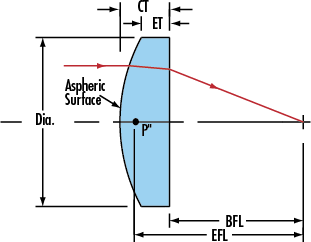Performance and selection of sliding bearings for grease
1. Sliding bearings can also be lubricated with grease. The following points should be considered when selecting grease:
(1) When the bearing load is large and the rotation speed is low, the grease with a small penetration degree should be selected, and vice versa. High-speed bearings use grease with a small degree of penetration and good mechanical stability. Special attention is paid to the lower viscosity of the base oil of the grease.
(2) The dropping point of the selected grease is generally higher than the working temperature of 20-30 ° C. In the case of continuous operation at high temperature, be careful not to exceed the allowable operating temperature range of the grease.
(3) When the sliding bearing works in water or humid environment, it should choose calcium-based, aluminum-based or lithium-based grease with good water resistance.
(4) Select a grease with good adhesion.
2. Selection of grease for sliding bearings:
The load is <1MPa, the circumferential speed of the journal is less than 1m/s, the maximum working temperature is 75°C, and the calcium base grease No. 3 is used;
The load is 1-6.5MPa, the circumferential speed of the journal is 0.5-5m/s, the maximum working temperature is 55°C, and the calcium base grease No. 2 is used;
The load is >6.5MPa, the circumferential speed of the journal is less than 0.5m/s, the maximum working temperature is 75°C, and the calcium base grease No. 3 is used;
The load is <6.5MPa, the circumferential speed of the journal is 0.5-5m/s, the maximum working temperature is 120°C, and the No. 2 lithium grease is used.
The load is >6.5MPa, the circumferential speed of the journal is less than 0.5m/s, the maximum working temperature is 110°C, and the calcium-sodium grease of No. 2 is used;
The load is 1-6.5MPa, the circumferential speed of the journal is less than 1m/s, the maximum working temperature is 50-100°C, and the No. 2 lithium grease is used.
The load is >5MPa, the circumferential speed of the journal is 0.5m/s, the maximum working temperature is 60°C, and the No. 2 calendering grease is used;
Calcium-sodium based grease should be considered in a humid environment at temperatures between 75 and 120 °C. In a humid environment, the working temperature is below 75 ° C, there is no calcium base grease No. 3, and aluminum base grease can also be used. When the working temperature is 110-120 ° C, lithium base grease or sulfhydryl base grease can be used. When concentrated lubrication, the consistency is smaller.
3. Lubrication cycle of grease for sliding bearings:
Occasionally, unimportant parts: shaft speed <200r/min, lubrication cycle once every 5 days; shaft speed >200r/min, lubrication cycle once every 3 days.
Intermittent operation: shaft speed <200r/min, lubrication cycle once every 2 days; shaft speed >200r/min, lubrication cycle once every day.
Continuous operation, working temperature is less than 40 °C: shaft speed <200r/min, lubrication cycle once every day; shaft speed>200r/min, lubrication cycle once per shift.
Continuous operation, working temperature 40-100 °C: shaft speed <200r/min, lubrication cycle once per shift; shaft speed >200r/min, lubrication cycle twice per shift.
Precision Aspheric Lenses are designed to focus light while eliminating spherical aberration from divergent light sources in applications including focusing the output of a laser diode. Aspheric lenses can increase the numerical aperture of a lens while minimizing system aberrations. Aspheric lenses may also reduce the number of elements needed in a multi-element system. Aspheric lenses can reduce overall system weight while providing advantages such as increasing throughput or simplifying assembly.
Convex Aspheric elements are used to reduce aberrations, apheric lens is ideal for light collection, projection, illumination, detection, and condensing applications.
VIS coating option provides less than 1.5% reflection from 425 – 675nm. NIR coating option provides less than 1.5% reflection from 600 – 1050nm. Contact us for volume pricing of the custom aspheric lenses.

Specification of our Aspheric lenses:
| Machining scope | φ5-200mm+0/-0.2 |
| Material | All kinds of optical glass and infrared materials aspheric(silicon,germanium,crystals etc.) |
| The face accuracy | P-V<0.3 muon m |
| Surface quality | 20/10-40/20 |
| Production capacity | 2000 pieces per month |
Custom Aspheric Lenses,Specialty Aspheric Lens,Aspheric Cylindrical Lens,Molded Aspheric Lenses
China Star Optics Technology Co.,Ltd. , https://www.realpoooptics.com
